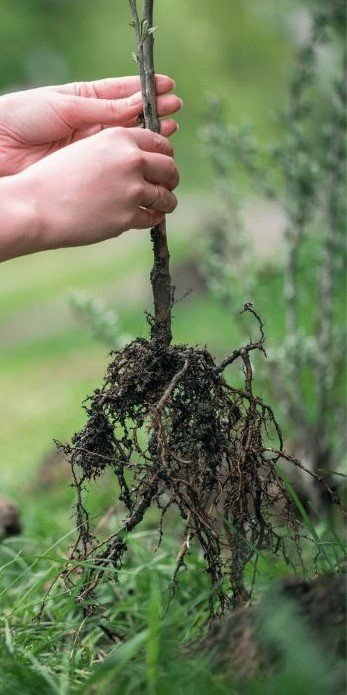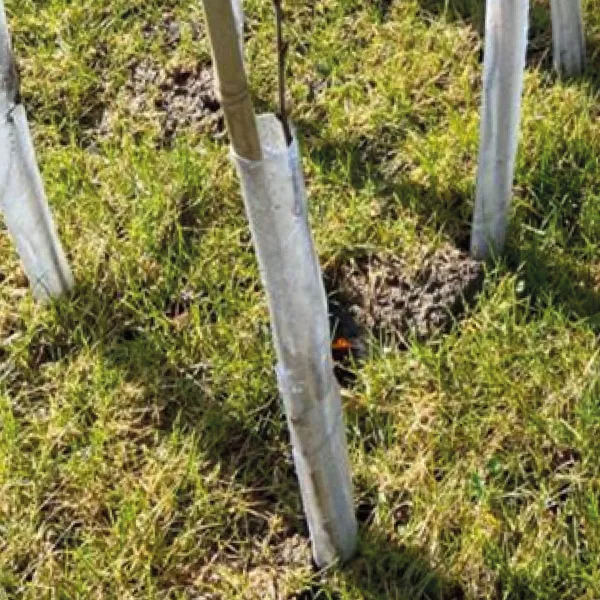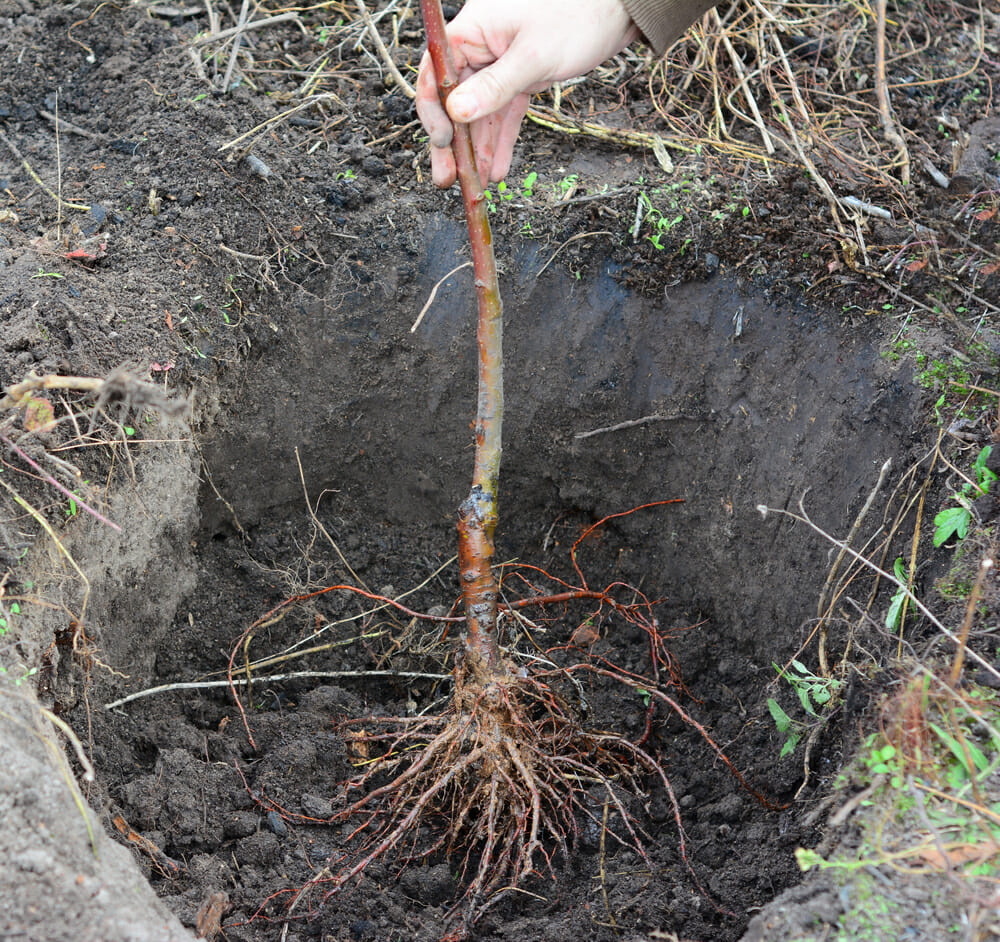Autumn is the perfect time to plant fruit trees, especially bare-root varieties. These trees are dormant and cost less than container-grown ones, making them a popular choice for gardeners. Bare-root trees are dug up from the nursery once they’ve gone dormant (between late autumn and early spring), which allows them to be sold at a lower price. However, if your area experiences frozen ground in winter, it’s better to wait until spring.
1. Prepare the Ground for Your Fruit Tree
The first step in planting a bare-root fruit tree is preparing the planting site. If you’re planting in an area of lawn, begin by removing the turf in a 3-foot (1 meter) radius. This will prevent grass from competing with your tree for moisture and nutrients.
Next, dig out any perennial weeds, especially their roots. If your soil is sandy or heavy with clay, enrich it with organic matter, such as well-rotted compost. Mixing this into the entire planting area rather than just the hole will encourage the tree’s roots to spread and establish quickly.

Dig a hole large enough to accommodate the tree’s roots without crowding them or bending them back on themselves. Your earlier soil prep should make this step easier. Also, drive a stake at least 2 feet (60 cm) deep into the ground to support the tree later.
2. Soak the Bare-root Tree
Before planting, soak your bare-root tree in a bucket of water for about 2 hours. This hydrates the roots, helping the tree to settle into its new environment.
3. Planting the Tree
Inspect the trunk just above the roots to find the soil level from the nursery. This is typically where the trunk transitions from dark to light. You’ll want to plant your tree at this exact depth. If no clear line is visible, aim to plant it just deep enough to cover the roots.
Use a cane or a similar tool to measure the correct soil level as you fill the hole with soil. Hold the tree in place while you gently shake the trunk to ensure soil fills the gaps between the roots. As you approach the top of the hole, firm the soil with your foot (pointing towards the trunk) to avoid compacting it too much. Finish filling the hole with soil and water the area thoroughly to help settle the soil.
4. Secure and Protect the Tree
To support your young fruit tree, tie it to the stake with a soft, stretchy tree tie made of rubber. Secure the tie about 2 feet (60 cm) above the ground in a figure-eight shape around the trunk and stake.
Spread a 2-inch (5 cm) layer of organic mulch, such as compost, around the tree to conserve moisture and suppress weeds. Keep the mulch away from the trunk to prevent rot.
5. Additional Protection
If rabbits are a concern, you can use a spiral tree guard to protect the bark. For deer, a fence around the tree or the whole planting area may be necessary.

6. Watering and Maintenance
Bare-root trees typically don’t need watering over the winter months. However, once the growing season starts, be sure to water the tree regularly to help it establish itself.
By following these simple steps, your bare-root fruit tree will have the best start in life, giving you a healthy, productive tree for years to come.
